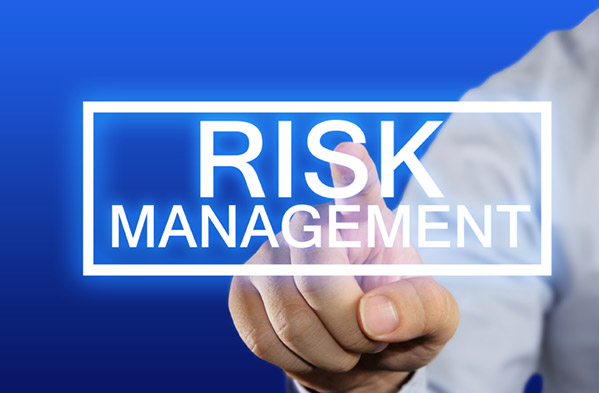Home/ Blog / The Value of Risk for Banks
Risk Management can transform risk for small to mid-sized banks.
We are all aware of the negative connotations around the word ‘risk’ – it is almost always thought of as a bad thing. However, risk management solutions help change the organizational perspective on risk, and can turn it into a strong asset for any small to mid-sized bank.
Risk lessons from an F1 driver
The key lesson is to understand that risk is an important asset when making decisions for the future of the organization. Not just for banks – but for any expert making a decision. Niki Lauda is a legendary F1 driver who is famous for how he managed risk. One of his famous apocryphal quotes (made famous by the 2013 movie on his life, Rush) is “I accept every time I get in my car there’s 20% chance I could die”.
He had just come back to racing after an accident which was very nearly fatal, and it was raining during the scheduled 1976 Japanese Grand Prix. He knew that his car would skid more because of the increased risk due to rain, and declined to race. This was a pivotal race that would determine the championship winner, but he declined – because he knew that the risk was too high. There are two very important lessons here.
Understanding and mapping existing risks
The first lesson is the acceptance that there is always a risk. Niki Lauda thought there was a 20% risk of an accident and deemed that as risk-acceptable. It is impossible for any action we take to have 0% risk. If we think that there is 0% risk, what it really shows is that we are not aware of the existing risks.
This is where risk management software comes in. Without a proper risk management system, it is not possible for management to know the current risk exposure of the organization. If management wants to know the current risk exposure, it has to ask the risk department to create a report based on all the information they have.
A risk management system, on the other hand, allows management to keep an eye on the current risk level of the organization, and manage things accordingly. There will always be some risk in any undertaking of the organization – that risk needs to be known and assessed. A live view of organizational risk is an essential tool for managers of small to mid-sized banks.

Keeping track of increasing risks
The second lesson is that we have to ensure that we notice when the risk increases to higher than acceptable levels. Niki Lauda was known to be very adamant about knowing all potential risks before a race. Whenever there was rain or any other risk hazard, all the drivers and F1 management had a meeting to decide whether to go through with the race or abandon it. Niki was known for asking more questions than other drivers in these sessions, because he wanted to keep track of all potential risks and how they may increase. He was made the designated safety person for drivers, and he would call for a driver meeting to decide whether to go through with the races whenever there were any risk related issues.
Similarly, organizations have to be adamant about knowing any increase in risk in their future environment. Risk management systems allow stakeholders to be instantly notified when risks increase. Actions that may have been planned may now be unviable due to the higher level of risk, and management can decide to plan a new course of action based on new risk levels.
Helping management make the right decisions
Known risks are an asset because they allow organizations to take the right actions. A good allegory would be knowing when the road is smooth, and when it is rough and full of potholes. If we knew where the roads were good, we would drive the speed limit there without worry, and as soon as we reached the part of the road which has potholes, we will slow down. Thus, we will be able to perform better when risks are acceptable and when we know that driving the speed limit is too dangerous, we can drive more cautiously and avoid any danger.
Did Niki Lauda make the right decision? Multiple drivers who agreed to race ended up abandoning the race because the conditions were too dangerous. The track itself was already dangerous, and the very next year there was a crash which killed 2 spectators. The Formula One organization decided to reevaluate the racetrack and deemed it unsafe for any future races. The Grand Prix would not return to the same track for 40 more years until 2007, when significant safety measures were taken to make the track safer.
If your organization wants to make the right decisions, it needs to know the conditions of the track as well. Enterprise risk management solutions provide your organization with an updated map of the road ahead, allowing your organization to move accordingly. If risks are reduced, management gets notified, and the bank can make faster, bigger moves. When risk rises, the bank can act more cautiously, ensuring their investments are safer.
That’s what every manager needs to know – before you step into the car for the race, do you know what the current risk level is?
If you want to see what a risk management system can do for your small to mid-sized organization, look at the Predict360 Risk Management module. You can arrange for a live demo or you can get registered for a free 30-day trial to see how risk management software works, and how it will benefit your organization.
About the company
360factors, Inc. (Austin, TX) helps companies improve business performance by reducing risk and ensuring compliance. Predict360, its flagship software product, vertically integrates regulations and requirements, policies and procedures management, risks and controls, audit management and inspections, and on-line training and qualifications, in a single cloud-based platform based on artificial intelligence.
Remain up-to-date on industry news/updates through our Twitter & Linkedin profiles.
Request a Demo
Complete the form below and our business team will be in touch to schedule a product demo.
By clicking ‘SUBMIT’ you agree to our Privacy Policy.



